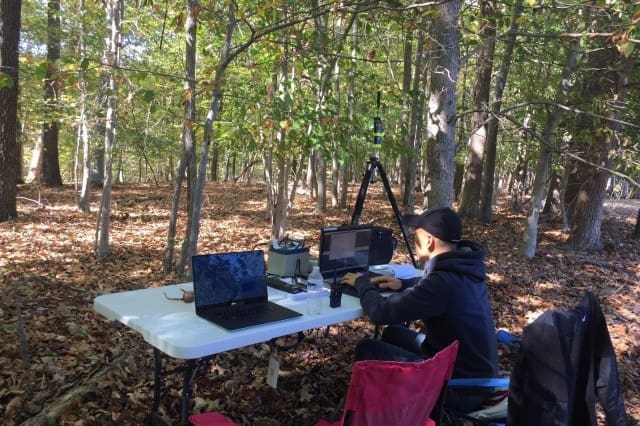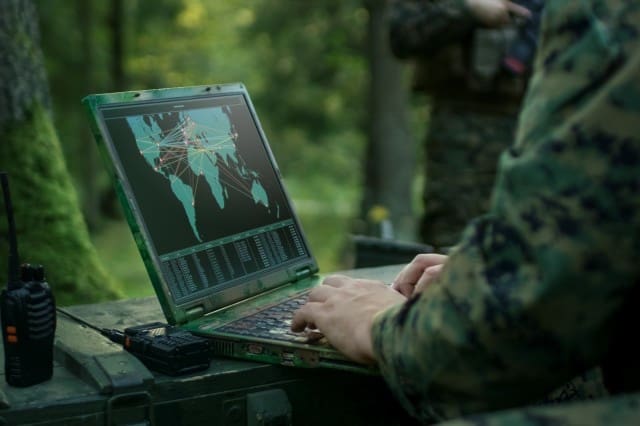ADELPHI, Md. — Soldiers operate in remote wireless environments with limited bandwidth and unpredictable connectivity, making it challenging to receive timely and reliable information. Using novel communications software, Army researchers prove that a reliable data delivery system can be created that survives adverse network environments.
One of the capabilities in the U.S Army’s Multi-Domain Operations is rapid convergence of cross-domain capabilities, said Dr. Jade Freeman, a researcher with the U.S. Army Combat Capabilities Development Command’s Army Research Laboratory.

“Future operations against a threat require the joint force to conduct continuous and rapid integration of multi-domain capabilities to gain cross-domain overmatch,” Freeman said. “The Army strategy’s operating environment is a battlespace with congested, degraded and wireless networks, and the warfare dynamics and complexities are constantly changing at a fast pace.”
A report recently published by the lab proves that timely and reliable data delivery under adverse tactical network environments is possible.
Army researchers conducted a study on the communication technology that supports optimized information interoperability, mediation and convergence – the ability to rapidly converge effects from multiple domains – under the contested network environment.
In the study, the researchers show that Mockets technology-enabled Integrated Sensor Architecture, or ISA, achieved superior performance in data transaction in terms of timeliness and volume, compared to using the Transmission Control Protocol, or TCP, based communication method under both stressed and wireless network settings.

ISA is the Army’s interoperability solution for sharing information between sensors and systems developed by the lab’s sister organization, the CCDC Command, Control, Computers, Communications, Cyber, Intelligence, Surveillance and Reconnaissance Center. ISA uses the TCP communication method to transmit data between sensors and devices.
Mockets (Mobile Sockets) is a novel communications library developed by the lab, specifically designed for wireless networking scenarios to improve communications in mobile ad hoc network environments.
According to Freeman, Mockets design and implementation meets the needs of tactical military information networks, which are typically wireless, and ad hoc with low bandwidth, intermittent connectivity and variable latency.
“Tactical networking environments are often characterized as Denied, Intermittent and Limited, or DIL, bandwidth,” Freeman said. “Systems and applications linking sensors and tactical devices in operations can produce constant data stream. Such dissemination of information across domains and echelons is constrained by these challenges of network conditions, and a potential consequence can be a missed opportunity or an action based on outdated messages or even cost of lives due to the loss of mission-critical information.”
The primary objective of this experimentation, Freeman said, was to evaluate the performance of ISA data transfer with Mockets under various network settings.
The data transmission rates from the Mockets protocol were evaluated and compared to those from the traditional TCP in ISA under the wired networking environment (Ethernet Local Area Network), which provides the baseline results, and then in the Extensible Mobile Ad-hoc Networking Emulator, simulating a stressed wired communication.
Additionally, the protocols were experimented using military tactical radios simulating radio communications in a wireless environment.
The results show that the Mockets protocols outperformed TCP on ISA under every wireless setting in addition to stressed wired networking environments, Freeman said. On average, the latency using Mockets was reduced by more than one third of the transmittal speed of TCP on the stress network. Likewise, Mockets-enabled ISA achieved two-fold increase in throughput from TCP in a wireless setting.
For Freeman and her fellow researchers, the continuation of this study is crucial to the future operating environment and protection of our Soldiers in combat.
“We want ensure that our Soldiers are supported with communication tools so that they can conduct missions with vital information at the edge uninterrupted,” Freeman said. “Soldiers operate in remote, harsh and hostile locations, and we believe that Mockets middleware is an innovative communication technology that will ensure network resiliency and adaptability.”
Additionally, she said, this research will contribute to the Army’s pursuit in strategy “Information Dominance” against its adversaries, rapid convergence of cross-domain capabilities on seamless machine-to-machine, man-machine interface, and artificial intelligence.
As for next steps for this research, Freeman said it still remains to understand and evaluate many other functionalities of Mockets with command, control, communication, and information, or C3I, technology integration.
For example, she said, Mockets has a variety of tuning parameters adapting to network condition, optimizing the bandwidth and mobility support, as well as message tagging, prioritization and cancellation features to control network congestion.

The lab will continue Mockets evaluations as well as further enhancement with automated performance optimization according to message context and network conditions, which will benefit the Army’s Network Modernization effort.
By U.S. Army CCDC Army Research Laboratory Public Affairs

